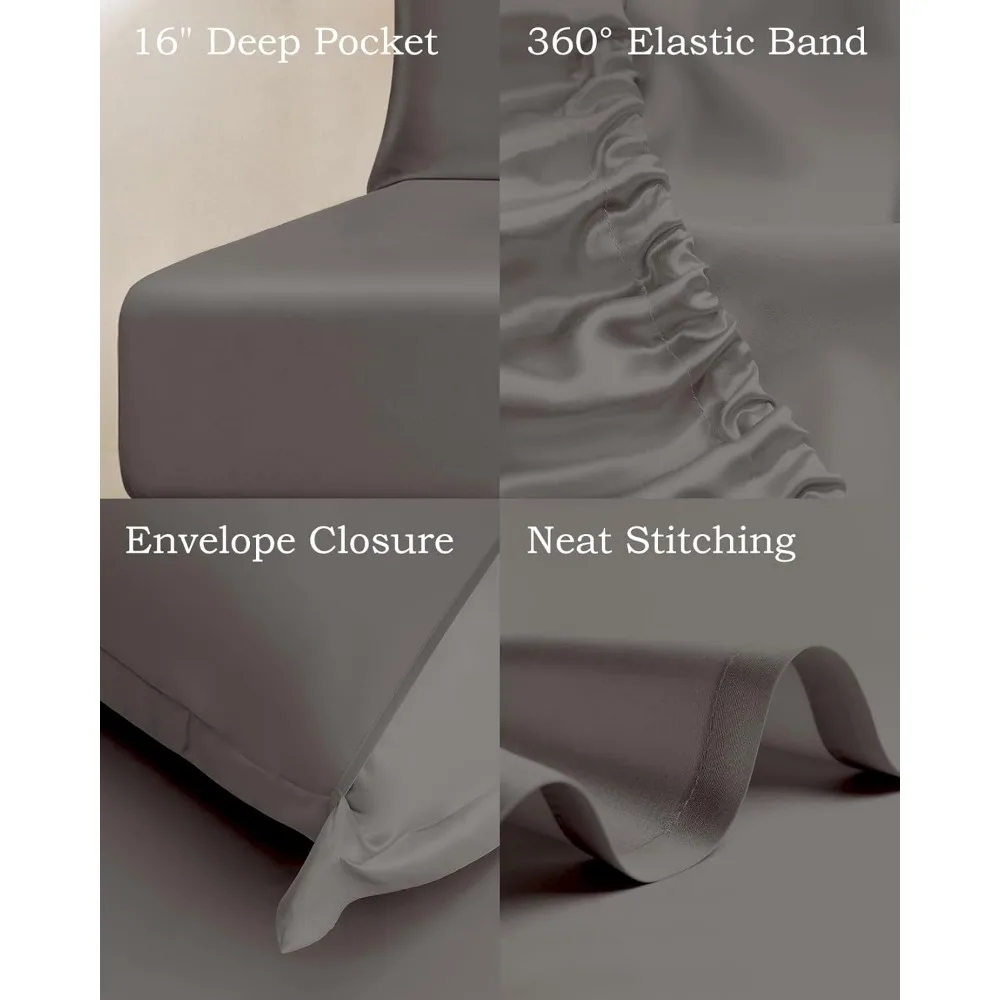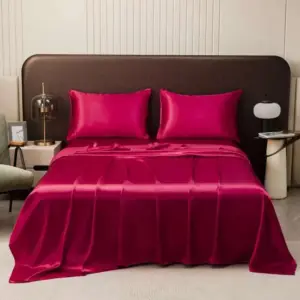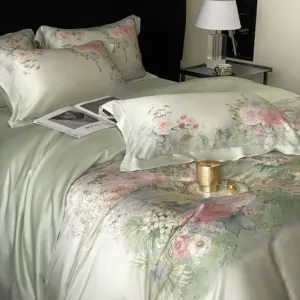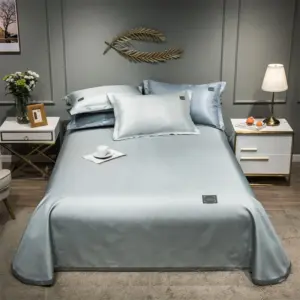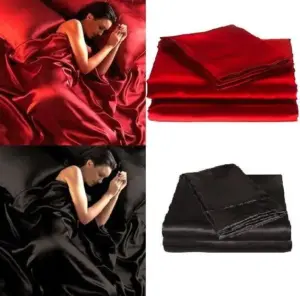Introduction: Understanding the World of Silk and Its Alternatives
Natural silk is a protein fiber produced by silkworms, specifically from the cocoons of the Bombyx mori moth larvae. What makes silk truly unique is its triangular prism fiber structure that reflects light from multiple angles, creating its characteristic lustrous appearance. For centuries, silk has been treasured for its exceptional softness, strength, and natural sheen.
Despite silk’s remarkable qualities, many consumers seek alternatives for various reasons. Some are concerned about the ethical implications of traditional silk production, which typically involves harvesting silkworm cocoons before the moths emerge. Others find the price point of genuine silk prohibitive, while some are simply looking for specific performance characteristics that might be better served by modern alternatives.
In today’s textile market, silk alternatives fall into three main categories: synthetic options (created from petroleum-based chemicals), semi-synthetic fabrics (derived from natural materials but processed with chemicals), and natural alternatives (plant-based fibers that can mimic certain silk-like properties). Each offers a different balance of characteristics, advantages, and limitations compared to traditional silk vs vegan silk comparison.
At Sanctuary Soft, we specialize in premium bedding materials, giving us unique insight into how these different fabrics perform in creating comfortable sleep environments. This comprehensive guide will help you understand the differences between natural silk and its various alternatives across multiple performance categories.
The Unique Properties of Natural Silk
Mulberry silk – produced by silkworms fed exclusively on mulberry leaves – represents the highest quality silk available commercially. The Bombyx mori silkworm produces fine, triangular-shaped protein fibers that create silk’s distinctive properties. Quality silk is measured in momme weight (similar to thread count), with premium bedding typically falling between 19-25 momme – the sweet spot balancing luxury feel with practical durability.
What makes natural silk truly exceptional is its remarkable combination of properties:
- Unparalleled softness and smoothness: Silk contains 18 amino acids that create a protein structure remarkably similar to human skin, giving it an incomparably smooth feel
- Natural temperature regulation: Silk efficiently adjusts to body temperature, keeping you cool in summer and warm in winter
- Superior moisture management: Can absorb up to 30% of its weight in moisture without feeling damp against skin
- Hypoallergenic qualities: Naturally resistant to dust mites, mold, and mildew, making it ideal for sensitive skin
- Multi-dimensional shine: Triangular fiber structure reflects light from multiple angles, creating depth and luminosity
- Impressive strength: Despite feeling delicate, silk is surprisingly strong (though it weakens when wet)
These exceptional properties have made silk the standard against which other luxury fabrics are measured. While alternatives may excel in specific areas, natural silk’s balanced combination of attributes creates a unique tactile experience and performance profile.
Our Mulberry silk sheets showcase these premium properties in bedding designed for ultimate comfort and luxury.
Categories of Silk Alternatives: An Overview
Synthetic Silk Alternatives
Synthetic silk alternatives are primarily petroleum-based fabrics designed to mimic silk’s appearance and feel at a lower price point. The most common is polyester satin, created through chemical processes that transform crude oil derivatives into smooth, shiny fabric. Manufacturing involves melting polymer chips, extruding them through spinnerets, and weaving the resulting fibers in a satin weave pattern. These synthetics typically excel in durability and easy maintenance but lack silk’s breathability and temperature regulation properties.
Semi-Synthetic/Regenerated Cellulose Fibers
Semi-synthetic fabrics represent a middle ground between natural and fully synthetic materials. These fabrics start with natural cellulose (typically from wood pulp) that undergoes chemical processing to create fibers. This category includes:
- Rayon/viscose: The oldest semi-synthetic, created by dissolving cellulose in chemicals
- Modal: A more refined version of rayon, typically made from beech tree pulp
- Tencel/lyocell: Produced using more environmentally friendly closed-loop systems
- Cupro: Created from cotton linter (the fine fuzz on cotton seeds)
These materials often achieve a closer approximation of silk’s drape and breathability than synthetics while maintaining greater affordability than natural silk.
Natural Plant-Based Alternatives
Some natural fibers can be processed or woven to achieve silk-like characteristics. Bamboo-derived fabrics (usually processed into rayon) offer exceptional softness and drape. Cotton, when woven in a sateen pattern, creates a smooth, lustrous surface that mimics certain aspects of silk’s appearance. These silk vs vegan silk comparison options appeal to those seeking plant-based alternatives with minimal chemical processing.
Our collection of vegan silk bedding offers several alternatives that balance luxury feel with ethical considerations.
Comparative Analysis: Silk vs. Alternatives Performance Matrix
Understanding how different fabrics compare across key performance metrics can help you select the best option for your specific needs. The following table provides a comparative overview of natural silk and its most common alternatives:
| Property | Natural Silk | Polyester Satin | Rayon/Viscose | Modal | Tencel/Lyocell | Bamboo Rayon | Cotton Sateen |
|---|---|---|---|---|---|---|---|
| Texture/Feel | Exceptionally smooth | Slippery smooth | Soft, fluid | Very soft | Silky smooth | Very soft | Smooth but crisp |
| Temperature Regulation | Excellent | Poor | Moderate | Good | Very good | Good | Moderate |
| Moisture Management | Excellent (30%) | Poor | Good (absorbs but retains) | Very good | Excellent (50%) | Very good | Good |
| Durability | Good (weakens when wet) | Excellent | Moderate (poor when wet) | Good | Very good | Moderate | Excellent |
| Maintenance Ease | Challenging | Very easy | Moderate | Easy | Easy | Moderate | Easy |
| Hypoallergenic | Naturally | Variable | Moderate | Good | Very good | Good | Variable |
| Environmental Impact | Moderate | High | Moderate-High | Moderate | Low | Moderate | Low-Moderate |
| Price Point | Very high | Low | Low-Moderate | Moderate | Moderate-High | Moderate | Low-Moderate |
This comparison highlights how different alternatives excel in different areas. For instance, while polyester satin offers excellent durability and ease of care at a low price point, it performs poorly in breathability and moisture management. Meanwhile, Tencel/lyocell comes closest to matching silk’s moisture-wicking properties while offering improved durability when wet.
Understanding the pros and cons of silk and vegan silk helps consumers make informed decisions based on their specific priorities and needs.
Synthetic Alternatives: Polyester Satin Examined
Polyester satin is created by weaving polyester filaments in a satin pattern, where the threads “float” over multiple cross-threads before interlacing. This creates a smooth, glossy surface on one side and a duller finish on the reverse. The manufacturing process involves melting petroleum-derived polymers and extruding them into fine, strong filaments.
Advantages of Polyester Satin
- Affordability: Typically 70-80% less expensive than natural silk
- Impressive durability: Highly resistant to tearing, pilling, and abrasion
- Simple maintenance: Machine washable, quick-drying, and naturally wrinkle-resistant
- Color vibrancy: Accepts dyes readily and retains color brilliance through multiple washes
- Consistent appearance: Maintains its smooth, glossy appearance with minimal care
Limitations of Polyester Satin
- Poor breathability: Creates a “plastic wrap” effect that traps heat and moisture
- Static electricity: Generates static cling, particularly in dry environments
- Environmental concerns: Non-biodegradable and sheds microplastics when washed
- Skin irritation: Can cause discomfort for sensitive skin due to moisture trapping
Polyester satin performs particularly well in decorative applications, occasional-use garments, and settings where durability and easy care take priority over breathability. For sleep environments, many consumers find our washable silk sheets offer a better balance of easy maintenance and comfort.
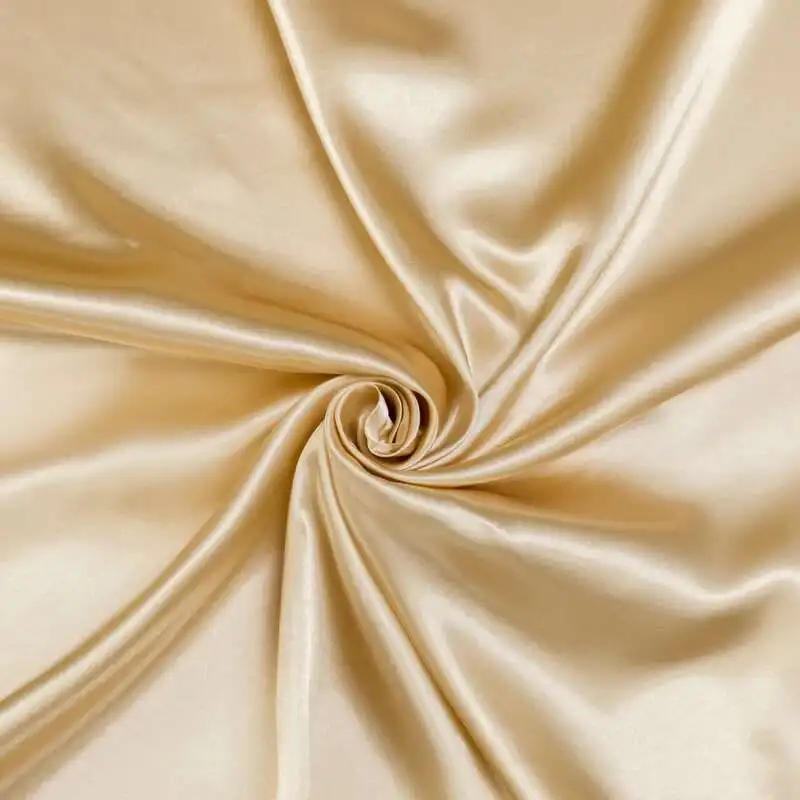
Semi-Synthetic Alternatives: Rayon and Viscose
Rayon and viscose (often used interchangeably) are among the oldest semi-synthetic fibers, created by dissolving cellulose from wood pulp in chemicals, then extruding the solution through spinnerets to form filaments. These regenerated cellulose fibers were developed specifically to imitate silk at a lower cost.
When comparing rayon/viscose to natural silk, several key differences emerge:
- Texture and appearance: Rayon offers excellent drape and a silk-like luster, but lacks the distinctive “scroop” sound of real silk when rubbed
- Moisture handling: Absorbs moisture even better than silk (up to 50% of its weight) but takes longer to dry and weakens significantly when wet
- Temperature regulation: Provides good breathability but doesn’t offer silk’s thermoregulating properties
- Durability concerns: Loses up to 50% of its strength when wet and is prone to stretching and shrinking
Rayon requires careful maintenance – typically dry cleaning or gentle hand washing is recommended, as machine washing can cause significant damage. The production process also raises environmental concerns, as traditional viscose manufacturing uses harsh chemicals and releases pollutants, though more eco-friendly alternatives to silk are emerging with improved manufacturing processes.
Premium Semi-Synthetics: Modal and Tencel/Lyocell
Modal and Tencel/lyocell represent the next generation of semi-synthetic fabrics, offering improved performance and sustainability over traditional rayon.
Modal: Silky Softness with Enhanced Durability
Modal is made from beech tree pulp using modified viscose processes. Compared to natural silk, modal offers:
- Superior softness: Often described as “softer than cotton” with a luxuriously smooth hand feel
- Enhanced strength: Maintains integrity when wet, unlike rayon and natural silk
- Excellent drape: Flows beautifully, similar to silk’s natural movement
- Color retention: Absorbs dye exceptionally well, maintaining vibrant color through washing
Tencel/Lyocell: Sustainable Performance Champion
Tencel (the brand name for lyocell) is produced using an environmentally responsible closed-loop system that recovers and reuses solvents. Its performance profile includes:
- Exceptional moisture management: Absorbs up to 50% more moisture than cotton while staying dry to the touch
- Temperature regulation: Efficiently wicks moisture away from the body, creating natural cooling
- Silky smooth texture: Provides a cool, smooth hand feel similar to silk
- Minimal wrinkling: Maintains appearance better than rayon or viscose
Both modal and Tencel represent significant advancements in creating silk-like fabrics with improved durability and lower environmental impact. Their superior moisture-wicking properties make them excellent choices for bedding, as demonstrated in our eucalyptus silk sheets collection.
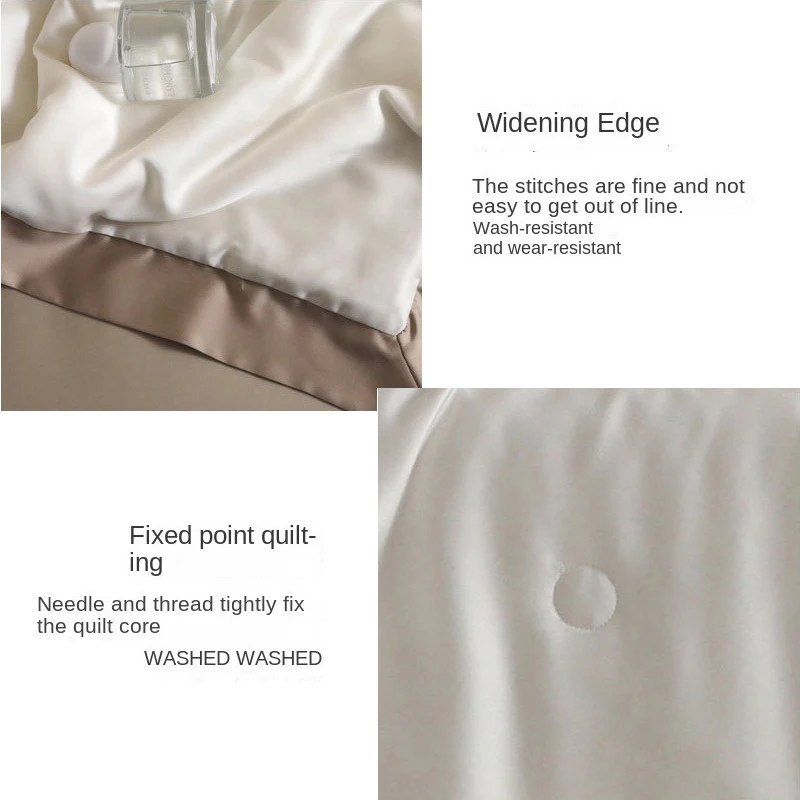
Luxury Semi-Synthetic: Cupro – The “Vegan Silk”
Cupro (sometimes called Bemberg) stands out among semi-synthetics as perhaps the closest alternative to natural silk in terms of hand feel and drape. This unique fabric is made from cotton linter – the short, fine fibers that adhere to cotton seeds after ginning. These fibers, once considered waste material, are dissolved in a copper-ammonia solution (hence the name “cupro”) and extruded into smooth filaments.
What makes cupro special among vegan alternatives to mulberry silk is its remarkable similarity to natural silk:
- Exceptional flow and drape: Moves with the body in a way nearly identical to silk
- Cooling touch: Provides the same initially cool sensation against skin that silk offers
- Breathability: Excellent moisture absorption with effective wicking properties
- Lustrous appearance: Creates a subtle, elegant sheen similar to silk’s natural luster
- Biodegradability: Unlike synthetic alternatives, cupro will eventually decompose
Cupro requires similar care to silk – gentle washing in cool water and air drying – though it tends to be slightly more durable when wet. Its production does involve chemicals, but the process utilizes what would otherwise be waste material, adding sustainability value.
Natural Alternatives: Bamboo-Derived Fabrics
Bamboo-derived fabrics have gained popularity as sustainable silk alternatives, though their production methods vary significantly in environmental impact. Most “bamboo fabric” is actually bamboo viscose/rayon, where bamboo pulp replaces wood pulp in the standard viscose process. A more eco-friendly option is bamboo lyocell, which uses closed-loop systems to recapture chemicals.
When comparing bamboo-derived fabrics to natural silk, several notable characteristics emerge:
- Exceptional softness: Often described as softer than cotton, with a silky hand feel
- Natural antibacterial properties: Bamboo kun (an antimicrobial agent) can remain in the finished fabric, though processing affects retention
- Moisture-wicking excellence: Absorbs moisture quickly and dries faster than cotton
- Temperature regulation: Natural micro-gaps in the fiber structure provide excellent breathability
Bamboo fabrics generally offer easier maintenance than silk, being machine washable and more resistant to wrinkles. Their sustainability profile depends entirely on the processing method – bamboo viscose raises similar environmental concerns to standard viscose, while bamboo lyocell offers a more eco-friendly alternative.
The bamboo vs mulberry silk fabric comparison often comes down to personal preference regarding feel and environmental priorities. Our bamboo silk sheets offer an excellent entry point for experiencing these benefits firsthand.
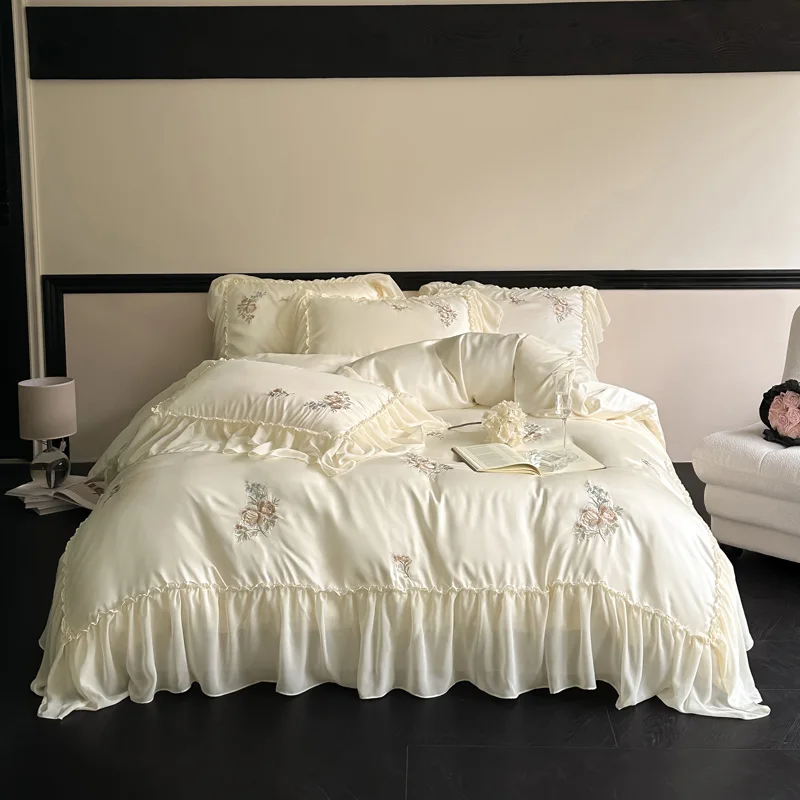
Natural Alternatives: Cotton Sateen
Cotton sateen offers a natural alternative to silk that achieves a similar lustrous appearance through weave structure rather than fiber type. Unlike standard cotton’s over-under weave, sateen uses a “four over, one under” pattern that creates a smooth surface with more exposed thread floats. This construction yields a fabric with several silk-like qualities.
Comparing cotton sateen to natural silk reveals these key differences:
- Luster and sheen: Sateen has a subtle shine, though less multidimensional than silk’s natural luminosity
- Touch sensation: Smooth and soft, but with a crisper hand feel than silk’s fluid drape
- Durability: Significantly more durable than silk, withstanding frequent washing and higher temperatures
- Temperature regulation: Good breathability but lacks silk’s natural temperature-adjusting properties
Cotton sateen’s primary advantages include easy care (machine washable), greater durability, and substantially lower cost compared to silk. It also presents fewer ethical concerns for vegan consumers. However, even high-thread-count sateen cannot match silk’s distinctive hand feel, lightweight nature, or protein-based benefits for skin and hair.
The silk vs cotton fabric comparison often leads consumers to choose based on practical concerns like maintenance needs versus luxury feel and specialized benefits.
Full-size Silk Sheets, King Size Silk Sheets, Queen Size Silk Sheets, Twin Size Silk Sheets, Washable Silk Sheets
Price range: $95.95 through $178.37 Select options This product has multiple variants. The options may be chosen on the product pageEucalyptus Silk Bedding Sets, Eucalyptus Silk Sheets
Price range: $360.24 through $393.60 Select options This product has multiple variants. The options may be chosen on the product page- Price range: $267.82 through $306.55 Select options This product has multiple variants. The options may be chosen on the product page
Bamboo Silk Sheets, Cooling Silk Sheets
Price range: $130.76 through $177.80 Select options This product has multiple variants. The options may be chosen on the product pageBamboo Silk Sheets, Queen Size Silk Fitted Sheet
Price range: $230.24 through $297.88 Select options This product has multiple variants. The options may be chosen on the product pageMulberry Silk Fitted Sheet, Mulberry Silk Sheets
Price range: $486.21 through $944.97 Select options This product has multiple variants. The options may be chosen on the product page
How to Identify Real Silk vs. Alternatives
With numerous materials designed to mimic silk’s appearance and feel, knowing how to distinguish genuine silk from alternatives is valuable knowledge for discerning consumers. Several simple tests can help identify authentic silk:
The Burn Test
The most reliable identification method involves burning a few threads (on materials you own):
* Real silk: Burns slowly, self-extinguishes, creates ash that crumbles easily, and smells distinctly like burning hair (because it’s protein-based)
* Synthetics like polyester: Melt rather than burn, create a hard bead when cooled, and smell like chemicals or plastic
* Plant-based materials (including semi-synthetics): Burn more quickly, smell like burning paper, and leave light gray ash
The Ring Test
Genuine silk can be pulled completely through a wedding ring despite its substantial nature, due to its incredible compressibility. Most synthetics and even many semi-synthetics cannot compress to the same degree.
Touch and Sound Test
Rub the fabric between your fingers:
* Real silk: Creates a distinctive rustling sound called “scroop” that no other fabric perfectly replicates
* Most alternatives: Produce either no sound or a different quality of sound
Visual Inspection
Examine the fabric closely:
* Real silk: Has slight irregularities in the weave that create depth and character
* Most synthetics: Display perfectly uniform weaving patterns
* Luster differences: Silk reflects light with dimension, while synthetic shine often appears “flat”
These identification methods help consumers make informed choices when selecting between silk and silk bedding alternatives for their specific needs.
Choosing the Right Fabric: Decision Framework
Selecting the ideal fabric depends on balancing several personal factors. Consider the following framework to guide your decision:
For Skin Sensitivity Concerns
- Severe sensitivities: Natural silk offers hypoallergenic properties and is least likely to cause irritation
- Mild sensitivities: Modal and Tencel provide good alternatives with smooth surfaces and excellent moisture management
- Specific chemical sensitivities: Cotton sateen offers a fully natural option with minimal processing
For Budget Considerations
- Luxury budget: Natural silk provides an unmatched combination of benefits
- Mid-range budget: Cupro, Tencel, and high-quality modal offer excellent silk-like properties
- Cost-conscious: Polyester satin provides the look of silk at the lowest price point, while cotton sateen offers better breathability at moderate cost
For Maintenance Preferences
- Minimal care requirement: Polyester satin and cotton sateen offer the easiest maintenance
- Balanced care vs. performance: Tencel and modal require moderate care while delivering excellent comfort
- Willing to provide special care: Natural silk and cupro deliver premium benefits for those willing to follow care instructions
For Ethical and Environmental Priorities
Those interested in choosing silk cruelty-free options should consider:
* Animal welfare concerns: Cupro, Tencel, modal, and plant-based options eliminate sericulture concerns
* Environmental focus: Tencel/lyocell offers the most environmentally responsible production process
* Biodegradability priority: Natural silk, cupro, and properly processed plant-based options will decompose naturally
Environmental and Ethical Considerations
The production of different fabrics carries varying environmental and ethical implications that many consumers consider alongside performance characteristics.
Natural Silk Production
Traditional silk production involves boiling silkworm cocoons with the pupae still inside, raising animal welfare concerns. Alternatives include:
* Peace silk/Ahimsa silk: Allows moths to emerge before processing cocoons, though this affects fiber quality
* Environmental considerations: Mulberry cultivation generally uses fewer pesticides than conventional cotton but requires significant water usage
Synthetic Alternatives
Polyester and other synthetics present several environmental challenges:
* Petroleum dependency: Requires non-renewable fossil fuel resources
* Microplastic pollution: Sheds microscopic plastic particles during washing that enter waterways
* Non-biodegradability: Remains in landfills for hundreds of years
Semi-Synthetic Sustainability
The environmental impact of semi-synthetics varies significantly by production method:
* Traditional viscose/rayon: Uses harsh chemicals in an open-loop system with significant pollution potential
* Lyocell/Tencel: Employs closed-loop systems that recover up to 99% of solvents, drastically reducing environmental impact
* Modal: Typically uses less toxic chemicals than conventional viscose, with some manufacturers employing water recovery systems
Understanding the vegan silk sustainable production process helps consumers make choices aligned with their environmental and ethical values.
Care and Maintenance Comparison
Different fabrics require varying levels of care to maintain their quality and appearance:
Natural Silk Care
- Washing: Hand wash in cool water (30°C/86°F) with pH-neutral detergent or machine wash using silk-specific settings
- Drying: Air dry away from direct sunlight; never tumble dry
- Ironing: Use low heat setting (silk setting) with a pressing cloth
- Storage: Hang or roll to avoid permanent creases; avoid plastic bags that prevent breathing
Synthetic Alternatives Care
- Washing: Machine washable on normal cycles
- Drying: Can be tumble dried on low heat
- Ironing: Low to medium heat if needed; often wrinkle-resistant
- Storage: Minimal special requirements
Semi-Synthetic Materials Care
- Modal/Tencel: Machine wash cold or warm; tumble dry on low
- Rayon/Viscose: Gentle cycle recommended; air dry or low-heat tumble dry
- Cupro: Hand wash or delicate cycle; air dry flat
Natural Alternatives Maintenance
- Cotton Sateen: Machine washable; medium-heat tumble drying acceptable
- Bamboo-derived fabrics: Gentle cycle recommended; air dry or low heat
With proper care, natural silk typically lasts 10-15 years, while high-quality alternatives like Tencel and modal can last 5-8 years with regular use.
Frequently Asked Questions About Silk Alternatives
Is satin the same as silk?
No. Satin refers to a weave structure, not a fiber type. Satin can be made from silk (silk satin) or from other fibers like polyester (polyester satin). True silk is always made from silkworm cocoons.
Can synthetic fabrics cause skin irritation?
Yes, some people experience irritation from synthetic fabrics like polyester satin. These materials trap heat and moisture, potentially causing discomfort for those with sensitive skin.
Are all silk alternatives vegan-friendly?
Most silk alternatives are vegan-friendly, but not all. Plant-based options and synthetics contain no animal products. However, some specialty “wild silks” still involve silkworms but use different harvesting methods.
What exactly is peace silk?
Peace silk (also called Ahimsa silk) is produced by allowing the silkworm moths to emerge naturally from their cocoons before harvesting the silk. This results in shorter fibers that create a different texture than traditional silk.
What makes a fabric “semi-synthetic”?
Semi-synthetic fabrics start with natural materials (typically cellulose from wood pulp) that undergo chemical processing to create fibers. They combine natural raw materials with synthetic manufacturing processes.
Which alternative feels most like real silk?
Cupro typically provides the closest approximation to silk’s distinctive feel and drape, though high-quality modal and Tencel also offer excellent silk-like properties. The question of is vegan silk as good as real depends on which specific properties matter most to the individual.
The Future of Silk Alternatives: Innovations in Textile Technology
The textile industry continues to evolve, with researchers developing increasingly sophisticated silk alternatives that combine sustainability with performance.
Biofabricated Protein Silks
Rather than harvesting silk from insects, scientists are now using bioengineering to create identical silk proteins. Companies are developing processes where modified bacteria, yeast, or algae produce the same proteins found in natural silk. These lab-grown protein fibers maintain silk’s beneficial amino acid structure without involving silkworms.
Enhanced Plant-Based Innovations
New processing techniques are improving the properties of plant-based alternatives:
* Advanced enzyme treatments that create softer, more silk-like textures from cellulose
* Specialized finishing processes that enhance the natural luster of plant fibers
* Mechanical processing innovations that require fewer chemicals
Blended Solutions
Some of the most promising developments combine different materials to maximize benefits:
* Lyocell-protein blends that combine silk-like drape with improved durability
* Plant fiber composites that create enhanced performance characteristics
* Recycled material integration that improves sustainability while maintaining luxury feel
These innovations continue to narrow the gap between natural silk and its alternatives, offering consumers increasingly compelling options that balance performance, ethics, and environmental considerations.
Making Your Final Decision: Balancing Luxury, Performance, and Values
When choosing between natural silk and its alternatives, the “best” option depends entirely on your personal priorities and the specific application. Natural silk remains unmatched in its combination of lightweight luxury, protein-based benefits for skin and hair, and natural temperature regulation. However, alternatives offer compelling advantages in specific areas.
Consider what matters most to you:
* If uncompromising luxury and skin benefits are your priority, natural silk remains the gold standard
* If easy care and durability matter most, high-quality Tencel or cotton sateen might better suit your lifestyle
* If environmental sustainability is paramount, Tencel/lyocell offers exceptional performance with reduced impact
* If you seek balance between luxury feel and ethical considerations, cupro provides an excellent compromise
Remember that different fabrics may be ideal for different applications – what works perfectly for bedding might not be the best choice for clothing or accessories. The vegan silk vs natural silk comparison ultimately comes down to which specific properties align with your unique needs and values.
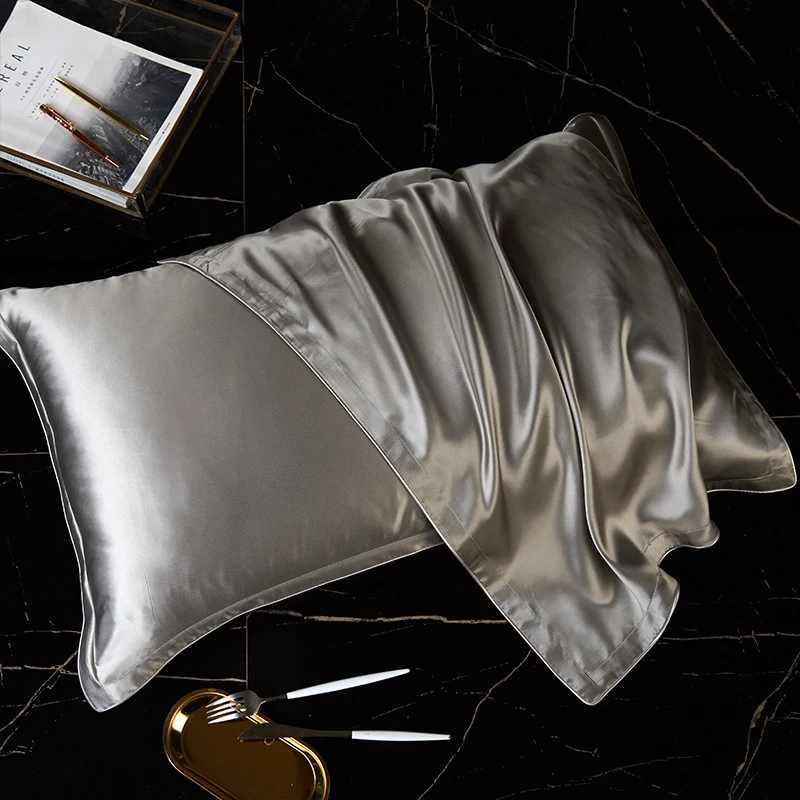
By understanding the distinctive properties of each option, you can make an informed choice that delivers the perfect balance of luxury, performance, and alignment with your personal values.

